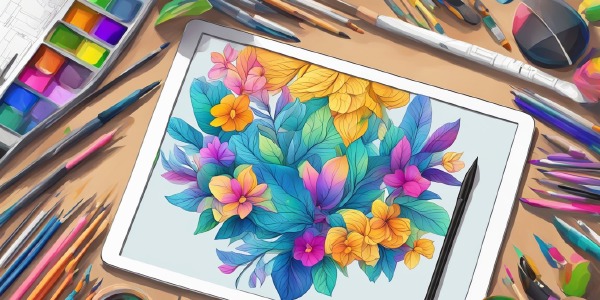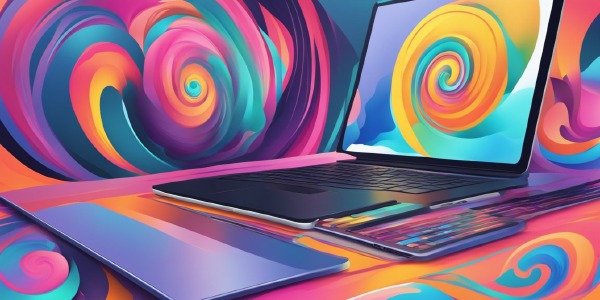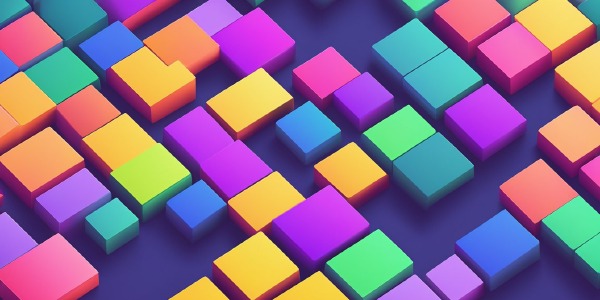Does AI Art Destroy Traditional Artistry? Exploring the Impact on Skilled Artists
Artificial intelligence has been increasingly involved in the creative sectors, particularly in the generation of art. As technology advances, AI art has become more sophisticated, raising questions among traditional artists and onlookers alike.
While some view AI as a tool that enhances the creative process, others fear it may undermine the value of skills honed by human artists over years of practice.
The potential for AI to alter the traditional art landscape is immense, but it’s crucial to explore whether this marks an evolution or a threat to artistic professions.

The integration of AI into art has brought about a change in the perception of what constitutes creativity. With algorithms capable of producing intricate artworks, the line between human and machine-made art is blurring.
This shift is not just about the end product but also affects the creative process itself.
As AI systems learn to mimic styles and aesthetics, the uniqueness and authenticity of an artist’s personal touch are subjects of debate.
Moreover, AI art raises numerous societal and ethical questions, including issues of copyright and intellectual property.
Key Takeaways
- AI’s involvement in art challenges the perception of creative authenticity and skill.
- The creative process is evolving due to AI, affecting the traditional roles of artists.
- Societal and ethical implications arise with the integration of AI into the art world.
The Evolution of Art and Technology

Art has always evolved alongside technological advancements, from the use of early pigments to the latest digital tools. Now, let’s explore how technology, including AI, has influenced art through time.
Historical Interplay of Art and Tech
The journey of art and technology intertwines from the rudimentary tools of early humans to the sophisticated devices you use today.
In the Renaissance, novel pigments and perspective techniques reshaped art, thanks to innovations of that era.
The Industrial Revolution introduced photography, which profoundly changed visual art by offering a new medium and prompting artists to focus on subjective interpretation rather than just realistic representation.
In the 20th century, you saw the emergence of new art forms like cinema and the use of synthetic materials in art.
Technology has been a catalyst for artistic innovation, with each leap forward prompting artists to explore and create in ways that were previously unimaginable.
- Noteworthy Tech Advances in Art:
- Renaissance: Invention of oil paint and improved brushes
- 19th century: Photographs altering perception of lifelike representation
- 20th century: Use of plastics and synthetic materials in sculptures and installations
- Current: Digital art and 3D programs like Procreate revolutionizing how artists create
Rise of Digital and Generative Art
You are living in an era where digital art is at the forefront of creative expression.
Generative art, artwork created with the use of an autonomous system, is gaining prominence.
The advent of Procreate, an app for digital illustration on iPads, has democratized the tools for artists, leading to an explosion in digital creativity.
Artificial Intelligence is one of the most controversial and exciting developments in the art world.
Platforms like Midjourney, which use Generative AI, enable artists and non-artists alike to produce images that range from the surreal to photorealistic.
- Generative AI Milestones:
- Art: AI-generated artworks are winning competitions and being sold at auctions
- Software: Platforms like Midjourney create complex images from textual descriptions
The impact of technology on art is undeniably profound, ushering in a new age of innovation and altering the landscape of what is considered modern art. While traditional skills remain relevant, newer forms like generative art are pushing the boundaries of the art world.
AI and the Artistic Landscape

Artificial Intelligence (AI) has created a new dynamic in the art world, affecting traditional skills and artists’ roles. This section explores its impacts and how it’s perceived as either a tool or a threat.
Impact of AI on Traditional Skills
The emergence of AI-generated art has redefined the concept of skill in the art domain.
Traditional artists have spent years honing their craft, mastering techniques from brushwork to color theory.
However, with AI, a vast range of styles and techniques can be replicated or even innovated upon in a fraction of the time.
The craftsmanship that illustrators and painters pride themselves on is now in a curious juxtaposition with a machine’s learning algorithms and processing power.
AI as a Tool or Threat to Artists
AI as a Tool: To some artists, AI opens up new avenues for collaboration and creativity.
These artists view AI as a complement to their toolkit, allowing them to augment their abilities and push boundaries quicker than ever before.
For instance, rapid prototyping of visual concepts that might have taken days can now be completed in mere hours.
AI can also support artists in tasks such as pattern generation or color palette suggestions, freeing them to focus more on the creative aspects of their work.
AI as a Threat: However, for others, the rise of AI art generates concern for the artist’s career.
There’s worry that AI might replace human creativity and the uniqueness that personal experience and emotion bring to art.
It raises questions about the value of an artist’s skill and their place in the future art market.
AI’s capability to produce art rapidly and continuously could also potentially flood the market, impacting the economic viability for human artists.
Creative Process and AI’s Role

As you explore the evolving world of art, you’ll find that AI has become an integral part of the creative process. It affects various aspects ranging from the conceptualization of pieces to their actual creation.
Collaboration Between AI and Artists
AI tools are designed to work in tandem with your creativity, acting as both an assistant and a source of inspiration. They can:
- Process large datasets for patterns, which can inform your artistic decisions.
- Generate preliminary designs that you can further refine.
However, the collaboration between you and AI should retain a balance, ensuring your human creativity remains at the forefront.
Authenticity and Human Touch in Art
While AI can emulate styles and execute techniques, the authenticity and emotion that come from a human artist are irreplaceable.
Your artistic process:
- Embodies unique experiences and emotions that AI cannot replicate.
- Leaves a signature human touch that resonates with audiences on a personal level.
Remember, AI may influence the tools and methods, but the soul of art originates from your human touch.
Societal and Ethical Considerations

When you consider AI-generated art, it’s important to understand the broad societal ripple effects and the deep ethical questions it raises. You’re about to explore how the advent of AI in art is reshaping the cultural landscape and navigating ethically complex waters.
Cultural Impact of AI-Generated Art
AI-generated art is shifting the boundaries of the art market and socio-cultural perceptions of creativity.
On the one hand, you have a democratization of visual art creation, where anyone with access to AI tools can create aesthetically pleasing images without years of technical training. This could lead to an explosion of diverse creative expressions, broadening the cultural conversation around what constitutes art.
- In the realm of social change, these technologies might challenge the notion of the artist as a solitary genius, turning art into a more collaborative and community-driven endeavor.
- However, concerns arise when considering the future of traditional skilled artists. The mass production of AI art could overshadow their craft, potentially devaluing the years of skill development and personal expression that define their work.
Ethical Implications of AI in Art
When it comes to ethics, the use of AI in art introduces several thought-provoking dilemmas:
- Copyright Infringement: The question of intellectual property rights becomes murky when AI generates images by learning from existing art. How do you ensure the rights of original artists are respected and not compromised by derivative AI work?
- Regulation: There’s a pressing need for regulation in the industry to tackle issues from copyright to ethical use of data. Yet, crafting laws that protect artists and encourage innovation without stifling creativity is a significant challenge.
- The call for a clear ethical framework is strong, as the potential for AI to both impersonate and generate the work of existing artists poses profound questions:
- Is it just if your visual style can be replicated and sold without your consent?
- How do you balance the benefits of AI art against the possible harm to artists’ livelihoods?
AI art creation tests the boundaries of ethical considerations in the art world, requiring a nuanced approach to this powerful technology’s integration into society.
The Future of Art in an AI World

In this digital age, you’ll encounter the blending of traditional skills with advanced AI technology, altering the future of art and your experience of it.
Innovation and the Future Artistic Experience
The intersection of AI technology and art is reshaping your artistic encounters.
Innovative AI tools are now assisting in creating complex art pieces, which could have seemed impossible before.
These tools can analyze vast amounts of historical art data, enabling you to produce unique art styles and aesthetics at an unprecedented speed. For instance:
- AI-generated visual art that adapts to your real-time emotions.
- Interactive installations where the artwork evolves based on viewer interactions.
The future art scene is likely to be a fusion of human and AI creativity, augmenting your art experience by expanding the ways art is created, distributed, and interacted with.
AI, Originality, and the Definition of Real Art
Your perceptions of originality and authenticity in art are being challenged by artificial intelligence. AI’s role in art creation has sparked a debate on what constitutes “real art”:
1. Originality:
- Can AI-created pieces be considered original?
- The input and creative direction you provide matter in defining the final artwork’s originality.
2. Authenticity:
- AI art hinges on algorithms, which may draw inspiration from existing works.
- Your definition of authenticity will evolve as AI blends historical influences to create novel art.
By engaging with AI-generated art, you are actively participating in a broader conversation about the essence of creative expression. You’ll find that this technological intervention is not just about replacing the traditional artist but redefining the collaborative process and what it means to be an artist in the AI-augmented future.
Practical Aspects of AI in Art Production

In exploring how AI impacts art, it’s essential to look at how artists are incorporating this technology into their work and the new avenues it opens for creative expression.
How Artists are Utilizing AI Today
Artists across various mediums are increasingly integrating AI into their practice. Generative AI, often powered by machine learning algorithms, enables the creation of novel artworks by processing large data sets. Here’s how it’s manifesting in different art forms:
AI Art:
- Generative algorithms: Artists are feeding AI systems with existing art as data to produce new, original pieces. These can echo styles like the vibrant strokes of Van Gogh’s Starry Night but reveal a unique flair that is born from AI computation.
- Color palette optimization: AI tools analyze images and suggest color palettes that artists can use or tweak to achieve desired visual effects.
Music:
- Composition tools: AI curates melodies and harmonies for musicians, suggesting chord progressions and enabling artists to tweak AI-generated pieces.
- Performance enhancement: AI-powered software corrects pitch and smoothens transitions, providing a polished final piece.
Film and Photography:
- Editing: AI automates tasks like color correction and object removal, speeding up post-production work.
- Special effects: AI is used to generate elaborate scenes or characters, which might be impractical or impossible to create physically.
Potential for AI in Expanding Creative Horizons
Your curiosity might be piqued about what AI holds for future artistic endeavors. AI opens new doors for:
- Unprecedented collaborations: As you interact with AI, a partnership forms where your creative input is enhanced by AI’s vast processing capability.
- Customized learning: AI tools analyze your style and suggest ways to evolve or branch out, leading to a personalized growth in your artistic journey.
- Pushing boundaries of creativity: AI’s ability to quickly generate and iterate on ideas can encourage you to push beyond your usual boundaries and explore new artistic territories.
Case Studies and Personal Narratives

In examining AI’s impact on artistry, you’ll uncover both success stories that celebrate AI-enhanced creativity and sobering challenges that traditional artists are confronting.
Success Stories of AI-Enhanced Artistry
Artists integrating AI into their work often find new avenues for expression. For instance, Michael, a digital artist, uses AI to experiment with textures that would be time-consuming to create by hand. The table below lists examples of artists who have combined their skills with AI to benefit their art careers:
| Artist | Type of Art | AI Use | Success Factor |
|---|---|---|---|
| Michael | Digital Illustration | AI textures and patterns | Time-efficient creation, unique styles |
| Sophia | Abstract Painting | Color scheme generation by AI | Enhanced aesthetics, audience engagement |
Challenges Faced by Existing Artists
Your personal experience as an artist might resonate with those facing challenges due to the advent of AI-generated art. Many feel violated as AI-generated images begin to saturate the market, creating intense competition. The list below highlights some common issues:
- Invisibility: Traditional skills might get overshadowed by the allure of AI’s novelty.
- Economic Impact: The art market might undervalue handcrafted art due to the influx of cheaper AI-generated alternatives.
- Authenticity Concern: Collectors and audiences wonder about the originality of AI-assisted pieces, often questioning the true artist behind the work.
Concluding Remarks on AI and Artists

When you contemplate the future of art in the age of AI, you face crucial considerations.
AI’s burgeoning capabilities in creating artwork might initially seem daunting for traditional artists, but it’s essential to identify where real opportunities lie.
Interaction: AI can foster a new form of creative dialogue.
You’re not replaced; instead, you’re invited to interact with technology, sparking a different kind of creativity that might not have emerged otherwise.
Creativity: Your human touch remains unique.
AI tools can generate patterns and designs, but the depth of human experience and emotional output in traditional art is unparalleled. These are creative frontiers that AI has yet to master.
- Skill exchange: The traditional skills you’ve honed are invaluable.
- Employing AI can be another tool rather than a replacement, allowing you to expand your repertoire.
| Traditional Artists | AI in Art |
|---|---|
| Emotive expression | Assistive technology |
| Unique perspectives | Repetitive creation |
| Cultural insight | Pattern recognition |




